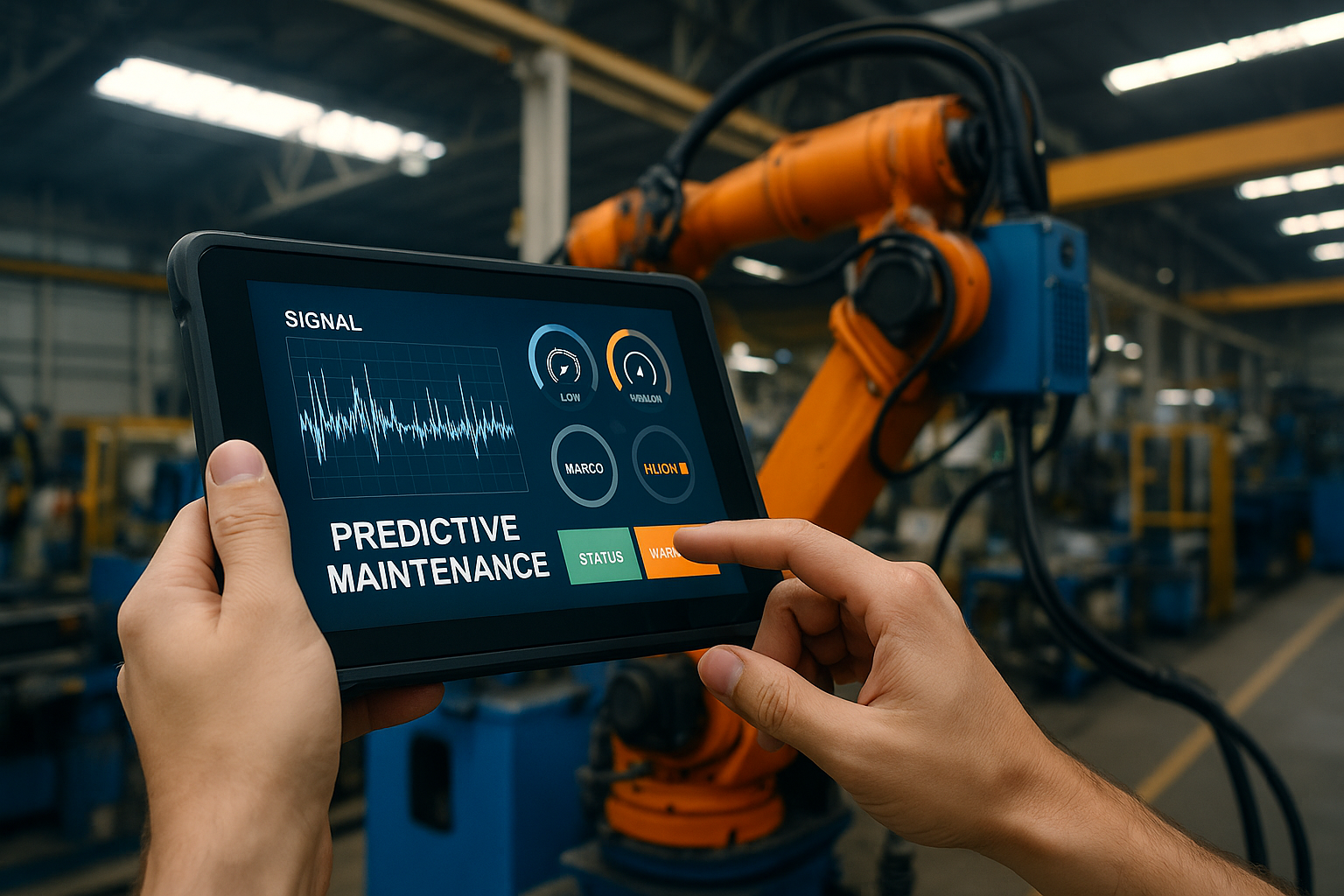AI and IoT audio sensors critical for sustainable Industry 5.0 growth
The study traces the evolution of maintenance strategies from reactive (Maintenance 1.0) to data-driven (Maintenance 4.0), culminating in Maintenance 5.0. This latest stage emphasizes ethical engineering, real-time decision-making, and minimal operator intervention. Audio sensors, especially microphones and acoustic emission sensors, are instrumental in enabling these intelligent systems by capturing sound signatures that indicate wear, vibration, or mechanical failure.

A comprehensive review published in Sensors titled “Sustainability Awareness in Manufacturing: A Review of IoT Audio Sensor Applications in the Industry 5.0 Era” evaluates how Internet of Things (IoT) audio sensors, when integrated with artificial intelligence (AI), can transform predictive maintenance in machining operations. The study, conducted by Stefania Ferrisi at the University of Calabria, offers a deep bibliometric and thematic analysis of 304 research articles spanning a decade of innovation in smart manufacturing and sustainability.
The report underlines the promise of AI-powered audio sensor systems as non-intrusive, cost-effective solutions for monitoring equipment health, reducing waste, and improving energy efficiency. It concludes that while economic and environmental aspects are well represented in current research, the social dimension of sustainability, worker safety and well-being, remains significantly underexplored.
How can audio sensors and AI advance predictive maintenance?
At the heart of Industry 5.0 lies a shift toward ethical, human-centric, and environmentally harmonious manufacturing systems. Within this paradigm, the integration of IoT sensors with AI enables predictive maintenance (PM) - a proactive approach that forecasts equipment failure and allows scheduled intervention, minimizing downtime and resource waste.
The study traces the evolution of maintenance strategies from reactive (Maintenance 1.0) to data-driven (Maintenance 4.0), culminating in Maintenance 5.0. This latest stage emphasizes ethical engineering, real-time decision-making, and minimal operator intervention. Audio sensors, especially microphones and acoustic emission sensors, are instrumental in enabling these intelligent systems by capturing sound signatures that indicate wear, vibration, or mechanical failure.
Unlike accelerometers or dynamometers, audio sensors are less expensive and easier to deploy without physically modifying machinery. This advantage aligns with sustainability goals by reducing financial and logistical barriers to adoption, especially critical for small and medium-sized enterprises.
Yet challenges persist. High ambient noise in industrial settings complicates data acquisition, especially for external microphones. Acoustic emission sensors, though more accurate, often require internal installation, posing integration hurdles. The study emphasizes the need for optimal sensor configuration and hybrid approaches to ensure data quality and model performance.
What research trends are emerging globally?
The bibliometric analysis reveals a 19.87% annual growth rate in scientific output on audio sensor-based PM systems between 2014 and 2024. China leads global research in both volume and citations, followed by the USA, India, and Germany. Despite the proliferation of studies, only about 10% involve international collaboration, highlighting a fragmentation that limits shared progress.
A thematic breakdown shows that most studies target tool condition monitoring (TCM), particularly in milling and grinding processes. Surface roughness prediction and fault detection are also widely addressed. Deep learning, especially convolutional neural networks (CNNs), dominates as the preferred AI methodology, often relying on audio data transformed into image-based spectrograms for analysis. Signal preprocessing using wavelet and Fourier transforms is common.
The review also applies Bradford’s and Lotka’s laws to identify prolific authors and high-impact journals. While the majority of contributors publish a single article, a small core group significantly influences the field. High citation rates between 2018 and 2022 suggest this period was critical for shaping current PM methodologies.
One key limitation identified is the scarcity of publicly available datasets. Industry hesitancy to share data for competitive or privacy reasons hampers model generalizability and reproducibility. Only 12% of reviewed studies used public datasets, such as PHM 2010 or the NASA Milling Dataset, limiting broader validation of AI models in real-world scenarios.
What sustainability gaps must be addressed in Industry 5.0?
The review finds a strong emphasis on economic and environmental sustainability, such as reduced energy usage, minimized downtime, and cost savings. However, the social dimension, ensuring worker safety, reducing stress from unplanned maintenance, and enabling intuitive decision-making, remains underrepresented in the literature.
This oversight is notable given Industry 5.0’s ethos of human-machine collaboration and ethical design. The study calls for interdisciplinary research that bridges technical innovation with social impact, advocating for models that are not only efficient but also equitable and transparent.
Predictive models based on AI and IoT audio sensors can support safe industrial environments by reducing emergency interventions and preventing catastrophic failures. Yet the current academic landscape underrepresents these human-centered outcomes. Only a few studies explicitly frame PM systems as tools for improving workplace conditions or mental load.
Further complicating the picture is inconsistent terminology. Researchers often conflate “anomaly detection,” “fault prediction,” and “tool condition monitoring,” obscuring methodological advances and limiting cross-study comparisons. A standardized taxonomy is needed to clarify research objectives and enhance interoperability across tools and datasets.
To fully realize the promise of these innovations, the field must overcome significant barriers, particularly the lack of publicly available industrial datasets, inconsistent classification of monitoring problems, and the narrow focus on economic efficiency at the expense of social sustainability.
Future work should prioritize cross-sector collaboration, including academic, corporate, and governmental partnerships. Sensor configurations must be optimized for specific machining operations, and real-time integration with digital twins could revolutionize process monitoring. Moreover, transparent, human-centered AI tools must be developed to truly align with the ethical foundations of Industry 5.0.
- FIRST PUBLISHED IN:
- Devdiscourse









